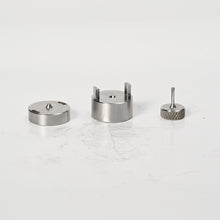General rule
Since the %C is almost always larger than the %N, it is usually the %N that determines the amount of material to weigh.
In general, the equation 10 ÷ %N will give you the mg of material to weigh, targeting 100µg of N.
If that amount is larger than about 200 mg, it would be better to use 5 ÷ %N. We can even do 3 ÷ %N if needed.
If you have groups of material with quite different C:N ratios, it is best to put them in different submission files. Contact us if you need help deciding.
You must always include the %N and %C data in the submission forms, as well as the weights (if pre-weighed). We need to know the C:N in order to determine the dilution setting to use for the 13C analysis.
When the C:N is about 10:1 :
Please contact someone at the lab to verify the amount of material you should weigh. At this point, a compromise is needed. We reduce the normal target of 100µg of N in order to also reduce the extremely high amount of C.
When the C:N is more than about 10:1 :
At this point it is strongly recommended to run for 15N and 13C in separate runs. The compromise is too great to get good data in a single run.
When running for 15N, we will use a CO2 trap to prevent the large slug of CO2 generated in the EA from reaching the IRMS.
The rules above still apply to the weights needed for 15N.
When running for 13C only
A target of 300µg of C is optimal. (i.e. 30 ÷ %C). The general rule above applies to C in this case as well. We can use less material if needed, please contact us.
 Courtesy of pelletpressdiesets.com
Courtesy of pelletpressdiesets.com